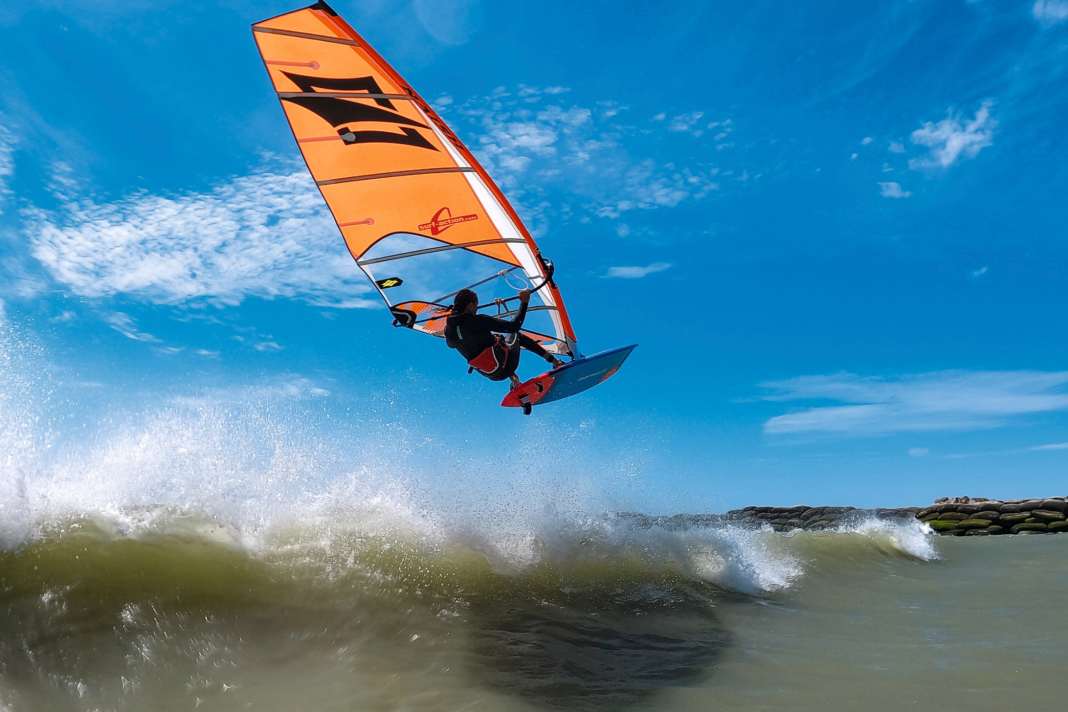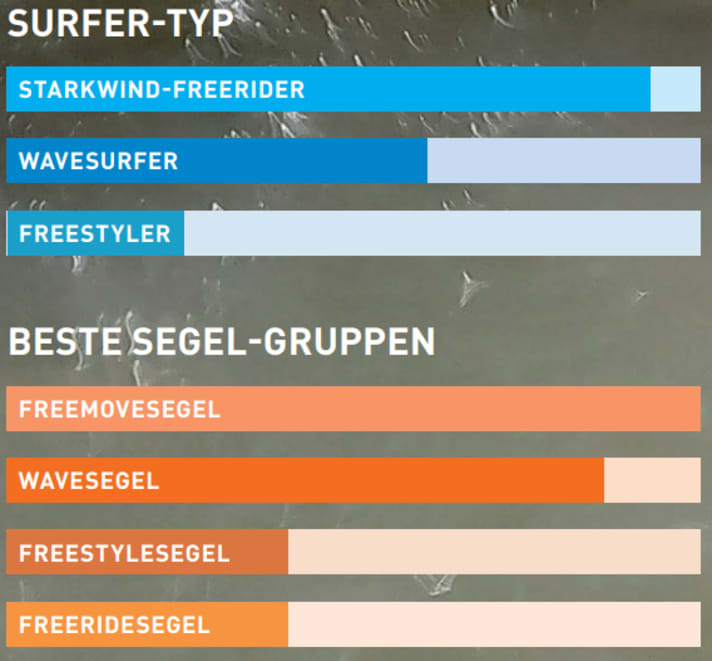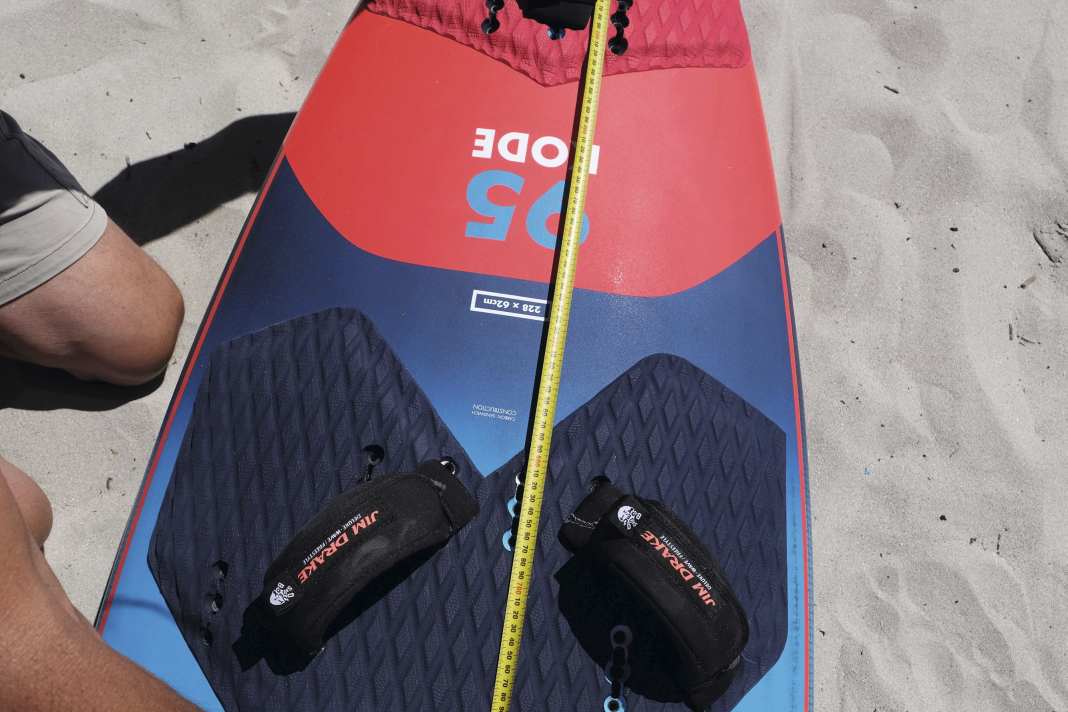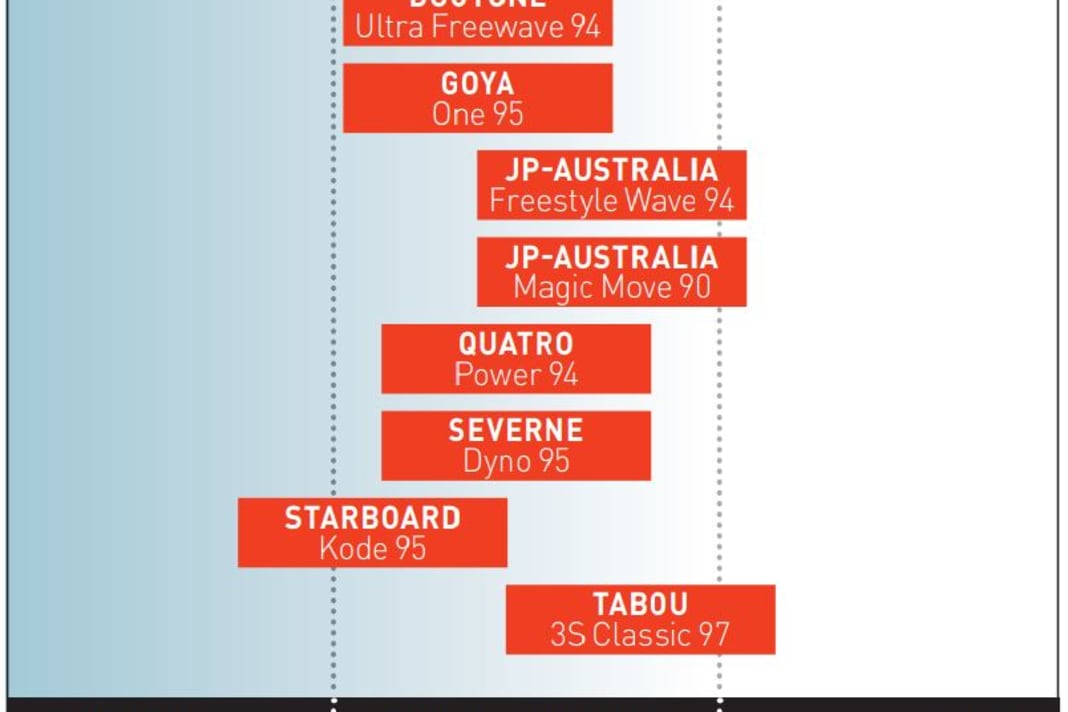Test Freemoveboards 2025: Eight 95-litre all-rounders for bump & jump, waves and flat water
Surf Testteam
· 28.02.2025






These freemoveboards are included in the test:
It sounds as incredible as the discount offers in carpet shops: if freemoveboards combine 70% freeride suitability, 90% bump & jump talent and 60% wave performance, you get 220 per cent windsurfing action - in one board. "I'll take it!", we said. And compared to some carpet dealers, the windsurf dealer is apparently an honest guy, even if the simplest calculation rules seem to be broken. Because on seven test days with 100 per cent wind yield, we were able to thrash these boards over the choppy water in Langebaan, carve to the point of giddiness in the mirror-smooth jibe lab or waggle on the wave to the point of no return - and were on the water for at least twice as many hours as all the "wave-only" surfers. The maths was saved and so were our surfing days.
However, it soon became clear that not all boards have the same qualities. If you don't have robust hocks, you shouldn't aim for wave rides with a Magic Move. Conversely, it was difficult to get a photo of the Magic Move and Freestyle Wave during the comparison rides without panorama mode: you don't need a calibrated GPS and kilometres of strokes to compare speeds, a short run is enough. Nevertheless, boards like the JP Freestyle Wave or even the very wave-orientated Quatro are a lot of fun on flat water and convey a good freeride feeling. All in all, the boards with three fins were always the winners in the versatility test when maximum riding performance was not the focus. And the option of tuning with a single freeride fin remains with all boards.

Finns offset on the base
Switching from a thruster set to a large single fin has many advantages in flat water. We were able to experience this in previous tests and confirm it 100 per cent again this time. Boards like the JP Freestyle Wave with the large centre fin almost look like a single fin board on flat water, so the change is almost superfluous and an additional, smaller wave fin is more appropriate. On the Starboard, the planing position, stability and speed improved noticeably with the standard single fin. To ensure that both fin set-ups fit perfectly, Goya, Quatro and Starboard rely on a fin system in which the box is perfectly positioned in the board for one set-up. In the other set-up, the fin is offset at the fin head so that the second option also fits perfectly. The fin positions can thus be selected even more extremely for these very wave-orientated shapes - without compromise. Goya builds the box for a normal single fin into the board and offsets the included thruster fin. Starboard does it the other way round. Past tests have shown that changing fins is worthwhile in most cases, even with "normal" fins and boxes, if you want better planing performance and more speed on flat water.
Jumping: Ramp vs. Popp
This is almost the most discussed question in the test team: Which board jumps best? A lot of run-up, aiming for a decent ramp and then pushing off while hanging from the sail - that's what free-running boards with a large fin and a lot of upwind speed can do really well. A JP Freestyle Wave is at just as little of a disadvantage as a Tabou 3S. The situation is different when "popping", when levering out in flat water or from very small waves: Then straps and fin position also come into play and boards like the Duotone Ultra FreeWave, Severne Dyno or Starboard Kode turn out to be true flatwater flummies, while JP and Tabou suddenly seem a touch more sluggish. We decided in favour of the second option because the differences in "pop" are greater than the flying characteristics over fat ramps.
Torx and Allen keys are simply the better tools."
Shape details and features






You can find more detailed pictures in the individual descriptions and in the preview gallery!
The Freemoveboards in the video
The notes of the Freemoveboards 95






Type recommendation Freemoveboards 2025
- Strong wind freerider will find a large selection. The two single-fin boards (JP Magic Move and Tabou 3S) are real specialists for heating and jibing. But also the JP Freestyle Wave comes very close and the Severne Dyno is also ideally suited. Goya, Duotone and Starboard are not the first choice for predominantly freeride use due to their throat characteristics, fin equipment or deck shape.
- Manoeuvre surfers with moderate freestyle ambitions are with Duotone Ultra FreeWave, JP Freestyle Wave and Severne Dyno well equipped, but also Goya, Quatro and Starboard offer good manoeuvrability, and the latter three also offer excellent wave performance.
- Surfers with wave ambitionswho also regularly surf flat water will find this a better alternative to the pure wave shape. Top in the wave are Quatro, Goya, Duotone and Starboard. The Dyno also revs very well, but somewhat less aggressively, and the JP Freestyle Wave definitely needs a smaller centre fin for wave use. Then it can also play in this group, but not with the standard 25 mm fin. JP Magic Move and Tabou 3S, on the other hand, feel most at home in fresh water.
The Freemoveboards 95 in the individual evaluation
Click to go to the tests of the individual boards

